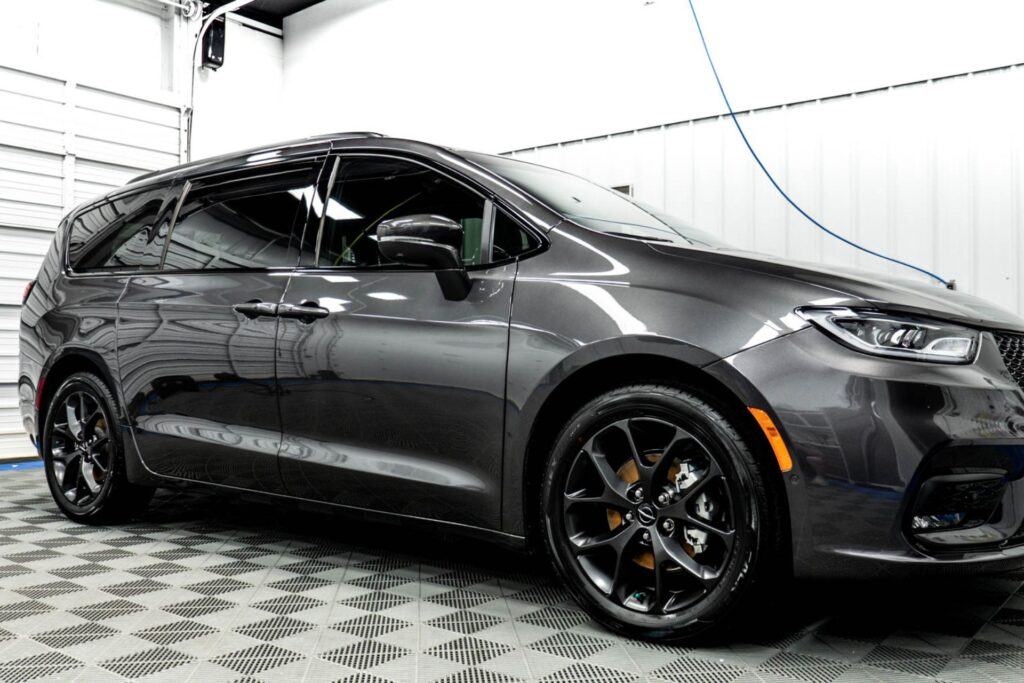Ceramic coating is a sensible investment that improves the appearance of a vehicle and raises the automobile’s value. To what extent can a ceramic coating harden at a lower temperature? The short answer is that the cure will occur regardless of the temperature. Continue reading this article with Ceramic Pro New River Valley to understand better how temperature influences ceramic coating applications!
When the weather is cold, can we still apply the ceramic coating?
The answer is yes, but we must be sure that the temperature is appropriate. Under no circumstances is it ok to apply the ceramic coating when the temperature is too low. If you try to use the layer while the temperature is lower than 40 degrees Fahrenheit (4.40 degrees Celsius), you won’t get a coating that works well. The curing process will take much longer, rendering the coating useless.

Factors that affect the application of ceramic coating.
Direct sunlight and humidity
When applying the ceramic coating, it is also crucial to maintain as much control as possible over the humidity and the amount of direct sunlight exposure.
The curing process’s regularity and the ceramic coating’s effectiveness are both significantly impacted by environmental factors such as humidity and the sun’s UV radiation. After applying the ceramic coating to your vehicle, you should keep it out of direct sunlight and expose it to ultraviolet rays for at least two days.
Temperature
The ideal temperature range for applying ceramic coatings is between 10 and 25 degrees Celsius (50 and 77 degrees Fahrenheit), with 20 degrees Celsius (68 degrees Fahrenheit) being the ideal temperature for most coatings.
Preparation
Preparation is critical before applying the ceramic coating. Surface preparation is required before the application of a ceramic coating. Ceramic coatings need a well-prepared surface to adhere properly. A few months after the ceramic coating is installed, its effects will begin to fade, which is undesirable.
The surface should be flawless for optimal adhesion of the nano ceramic coating. The outside of the car must be free of any dirt, dust, bird poop, insects, grime, or other debris. If the surface has been fully prepared, the molecules of the liquid will adhere to the microscopic ridges even when the liquid is applied at a distance. The paint’s surface will become very slippery after using the coating.
How long does it take for a ceramic coating to cure completely?
The time needed for the curing process ranges from around two to three weeks and is determined by environmental factors like temperature and humidity. Within the allotted time frame, use extreme care. Because the coating is hydrophobic, it may help prevent water stains on the precise finish you have on your vehicle. A coating is less likely to etch than the original clear coat, but it is especially prone to water spots while drying, and removing them may be costly. During the drying process, you should steer clear of parking beneath trees, especially if the leaves on those trees are falling off. You are also responsible for ensuring that bird droppings, sap, and pollen do not bake on the car in the sun.
To get the most out of ceramic coating, it’s essential to do regular car maintenance in the right way. Your car’s paint will last longer with a high-quality coating from Ceramic Pro New River Valley in Christiansburg, VA. Furthermore, we provide various ceramic coating options to suit our customers’ needs. For ceramic coating services, contact Ceramic Pro New River Valley at (540)315-7362 or drop by 3025 N Franklin St, Christiansburg, VA 24073.
